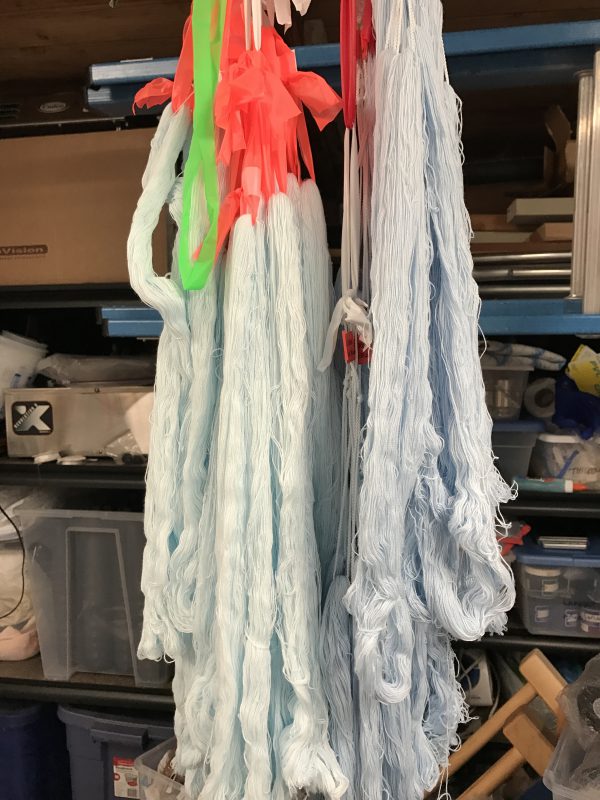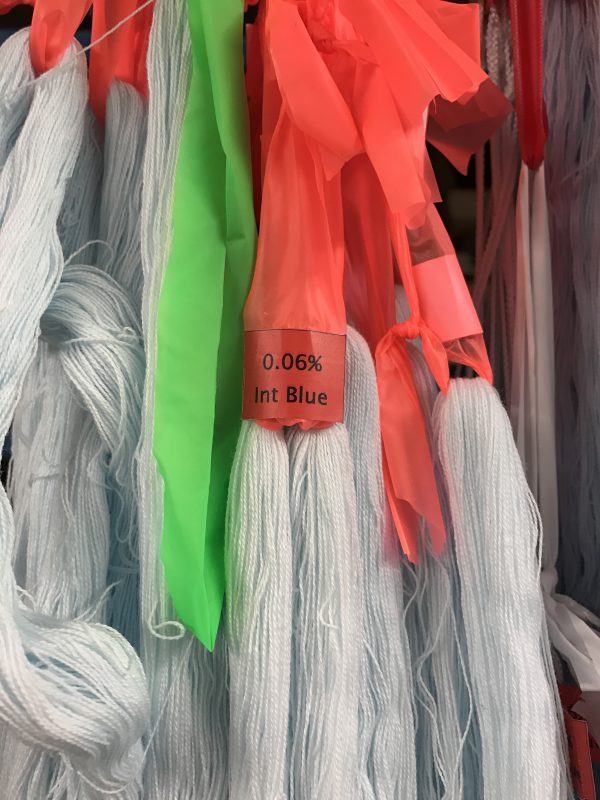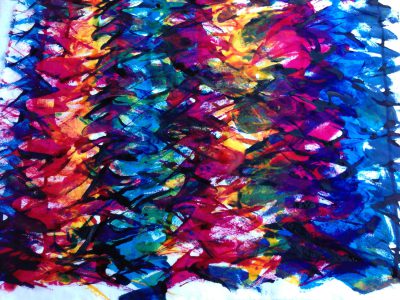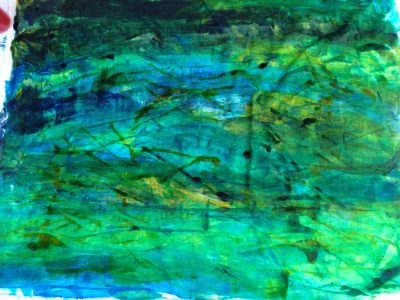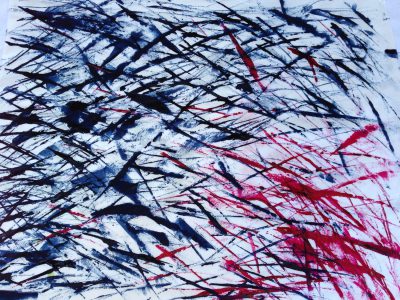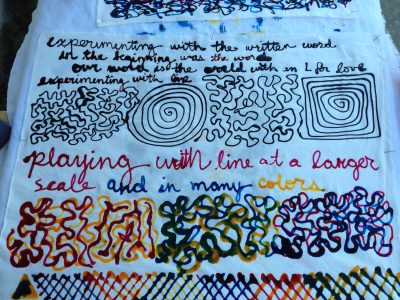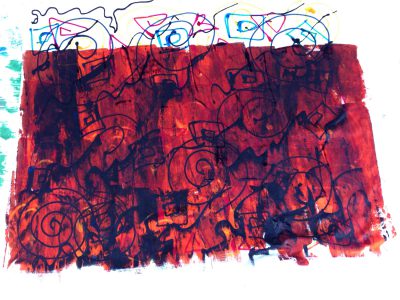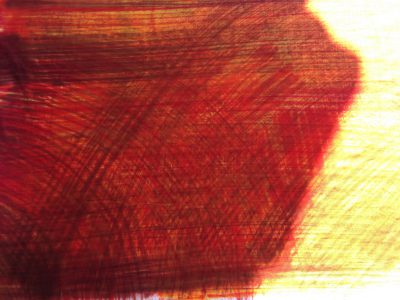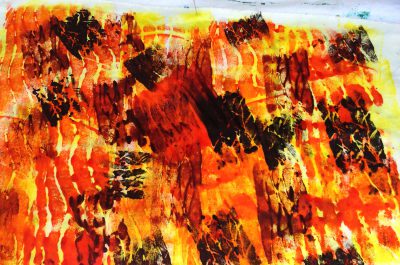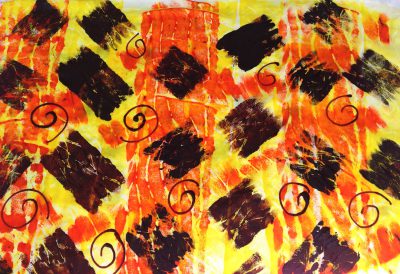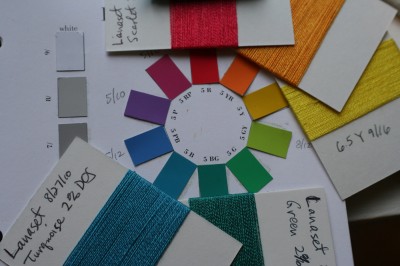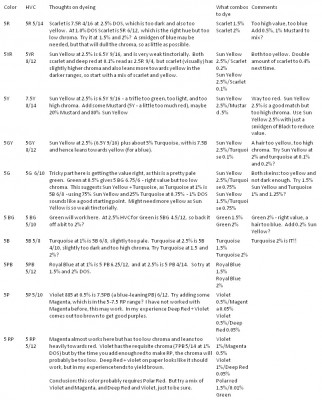In between threading up my loom, I have been contending with large heaps of yarn. The first pile is this box that appeared on my doorstep a few days ago:
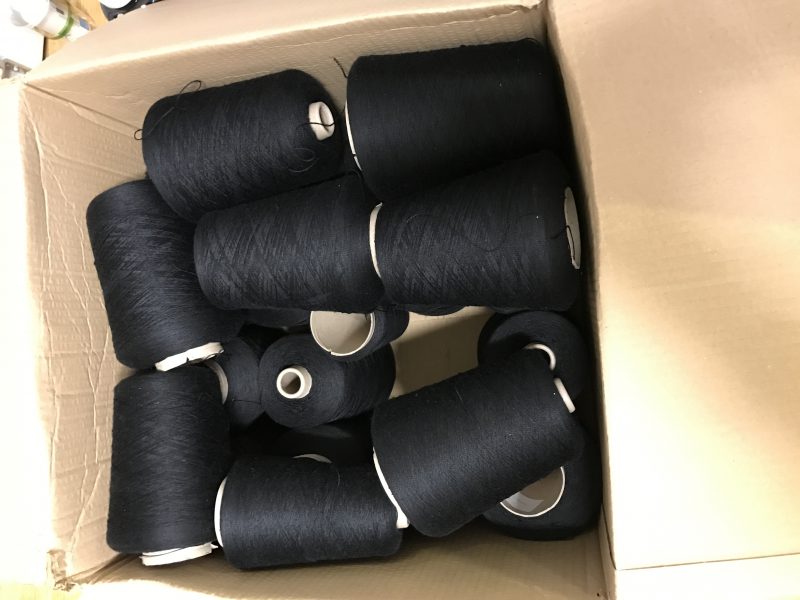
That’s about 30 pounds of black silk yarn – 30/2 and 20/2 weight. I bought some white silk yarn from Eurestex and asked them to dye and cone it for me. Alas, the dyers had a large minimum order, so I had to order a large lot of it. Fortunately it wasn’t that expensive, and I was able to find others to split the cost. About half of it is winging its way to others – I’m keeping the rest to use in my next few shawl warps.
The second pile of yarn is for dye samples. As you may recall, I’m making a large number of dye samples using Procion MX dyes on cotton – 1500 samples, to be exact. I’m using 10-gram skeins of 20/2 cotton, purchased from Testfabrics, for my samples. Each combination of three primary colors requires 250 skeins, so I’ve been doing a LOT of prep work. Each skein is tied in only one place, so I add a second skein tie. Then I put a label on a piece of flagging tape that indicates the color and concentration of the first dyebath, and tie the tape around the skein. For the other two dyebaths, I’m adding a second labeled piece of flagging tape, like this:
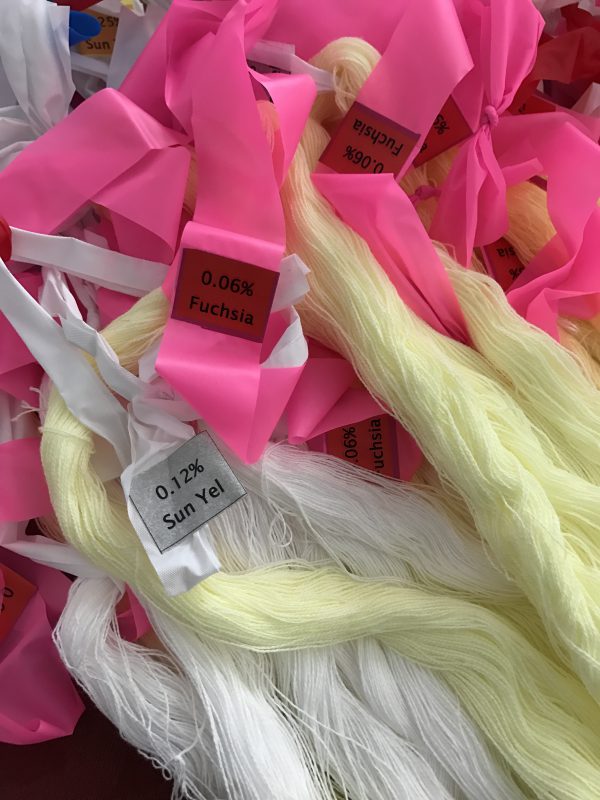
Putting together individual skeins doesn’t take long, but multiplying by 1500 skeins? That is a Herculean task.
Here are the first 500-odd skeins:
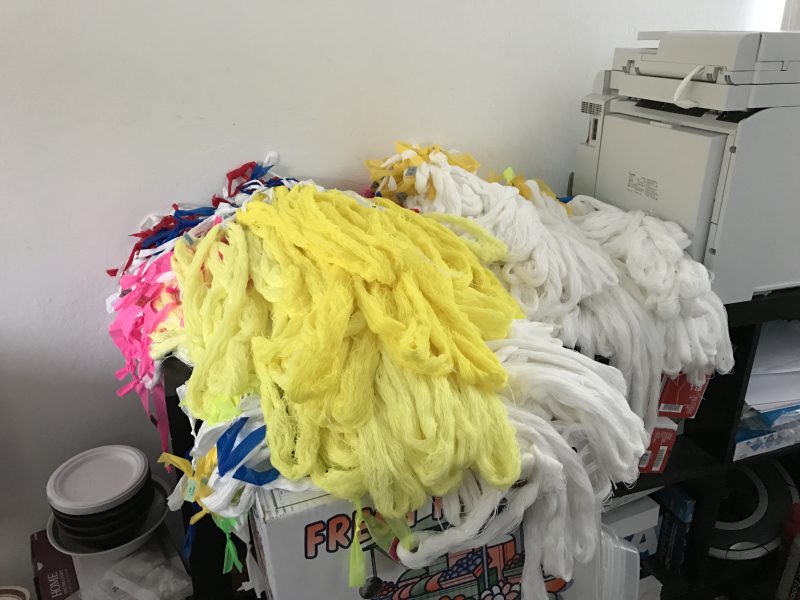
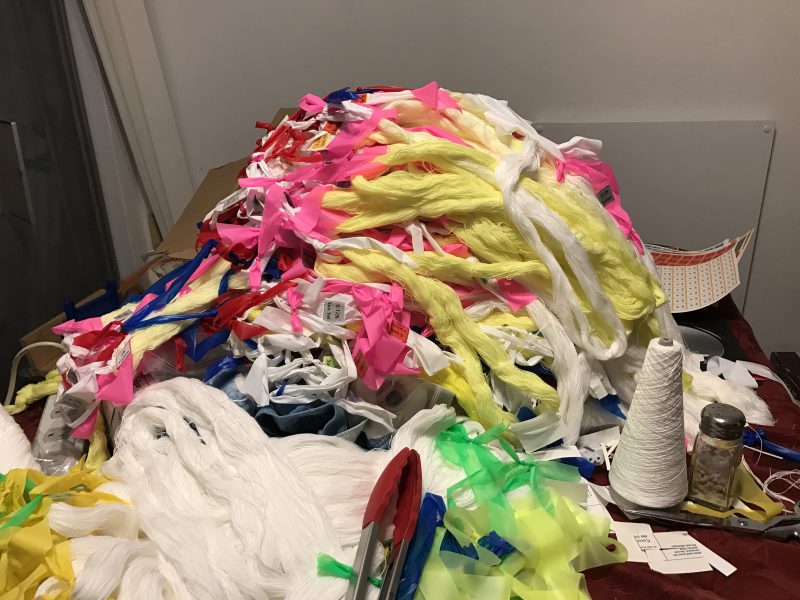
Fortunately, I’m not alone in tackling this mountain of skeins. My fiber buddy Kaye is helping out (she is of course getting a set of samples for herself). And I have two very able and enthusiastic studio assistants:
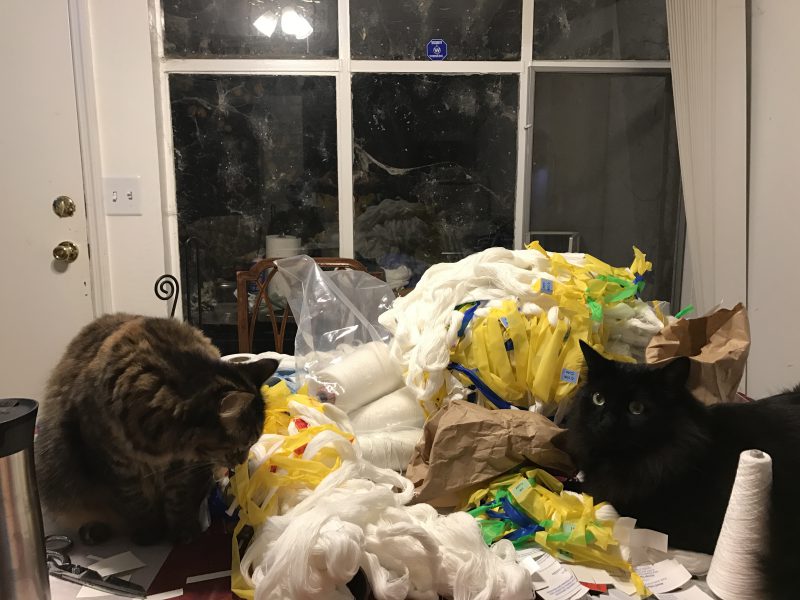
Fortunately they are mostly offering moral support. Just imagine the mess if they were truly interested!
